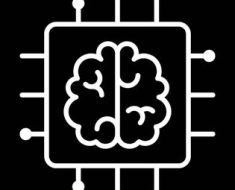2 min read
Welcome to “Python for Traders,” a comprehensive journey into using Python to enhance your trading strategies. This course is designed to equip you with the essential Python skills and tools necessary to analyze, visualize, and implement trading strategies. Whether you’re a beginner in coding or trading, this course will provide a solid foundation, combining both theoretical knowledge and practical insights to help you navigate the world of trading with Python.

Part 1: Introduction to Python for Trading (1.5 hours) Live Session – 13th Jan 24 – Evening Session ( 07.30pm – 08:30pm IST )
- Objective: Understand Python basics and how they apply to trading.
Topics:
- Python Basics: Overview of Python, setting up the environment, understanding syntax, variables, expressions, and data types.
- Control Structures: Introduction to conditional statements (if/else) and loops (for/while) to manage the flow of the program.
- Functions and Classes: Understanding how to create reusable code and modular designs with functions and basic object-oriented programming.
- Essential Libraries: Brief overview of libraries like NumPy, Pandas, matplotlib, and how they fit in the trading ecosystem.
Part 2: Data Processing using NumPy and Pandas (1.5 hours) Live Session – 14th Jan 24 – Evening Session ( 07.30pm – 08:30pm IST )
- Objective: Learn to manipulate and process trading data using powerful Python libraries.
Topics:
- NumPy Basics: Understanding arrays, array operations, and how NumPy can be used for numerical computations.
- Pandas Fundamentals: Introduction to Series and DataFrames, data manipulation, filtering, and aggregation.
- Data Cleaning: Techniques for handling missing data, duplicate data, and data transformation.
- Time Series Data: Working with dates and times, resampling, and time-series-specific operations important for trading data.
Part 3: Data Collection and Visualization (1.5 hours) Live Session – 20th Jan 24 – Evening Session ( 07.30pm – 08:30pm IST )
- Objective: Learn to collect financial data and visualize it for analysis.
Topics:
- Data Collection with yfinance: Using yfinance to fetch historical market data.
- Basics of Data Visualization: Overview of visualization tools and principles.
- Using Matplotlib, Seaborn and Plotly: Creating static and interactive plots to visualize financial data and trends.
Part 4: Technical Analysis with pandas_ta and Visualization (1.5 hours) Live Session – 21st Jan 24 – Evening Session ( 07.30pm – 08:30pm IST )
- Objective: Compute technical indicators and visualize them to identify trading signals.
Topics:
- Introduction to Technical Analysis: Understanding the premise and purpose of technical indicators in trading.
- Computing Indicators with pandas_ta: Calculating moving averages, RSI, MACD, Supertrend and other common indicators.
- Strategy Building: Basics of building a simple trading strategy using technical indicators.
- Advanced Visualization: Plotting technical indicators on stock charts for analysis.
Prerequisites for Crash Course – Python for Traders
- Basic Knowledge of Trading: Familiarity with stock market fundamentals, including types of orders, trading instruments, market terminology, and the structure of markets.
- Technical Analysis Fundamentals: Some background in technical analysis, including chart reading and interpretation of common indicators, would be beneficial.
- Software Installation: Capability to install software and set up a working environment, as the course will require setting up Python and associated libraries.
- Access to a Computer: A reliable computer with internet access capable of running Python and processing data.
- Time Commitment: Willingness to dedicate time outside of course hours for practice, exploration, and implementation of the concepts learned.
Who Should Attend the Course
- Aspiring Traders: Individuals looking to enter the trading world and seeking to leverage Python’s power to analyze and trade markets.
- Financial Analysts: Professionals in finance who want to enhance their data analysis skills and automate trading strategies.
- Quantitative Analysts: Quants who need to strengthen their programming skills in Python for quantitative analysis and model development.
- Data Scientists: Data experts interested in branching out into financial data analysis and algorithmic trading.
- Algorithmic Developers: Programmers who aim to build or improve algorithmic trading models using Python’s extensive libraries and frameworks.
- Students of Finance and Computer Science: University students seeking practical skills that combine finance and programming for a career in fintech or trading.
Why to Learn Python Programming Language
- Versatility: Python’s simple syntax and readability make it accessible for beginners and valuable for experts across various industries, especially in trading and finance.
- Powerful Libraries: With libraries like NumPy, Pandas, matplotlib, and more, Python offers an extensive range of tools for data analysis, visualization, and machine learning.
- Community and Support: Python has a vast community of developers, which means extensive documentation, forums, and third-party resources are readily available for learning and troubleshooting.
- Automation Potential: Python excels in automating repetitive tasks, saving time, and reducing the potential for human error in trading operations.
- Innovation in Trading: Python allows for the development of sophisticated models and algorithms, leading to innovative trading strategies and a competitive edge in the market.
Customer Support/Whatsapp: +91 9535133445
Support Timings: 9.00 a.m – 6.00 p.m IST
By the end of this course, participants will have a solid understanding of how to use Python in various trading contexts, from data collection and processing to analysis and strategy development. This course will serve as a stepping stone into the world of algorithmic trading, empowering you to make more informed and strategic trading decisions.





